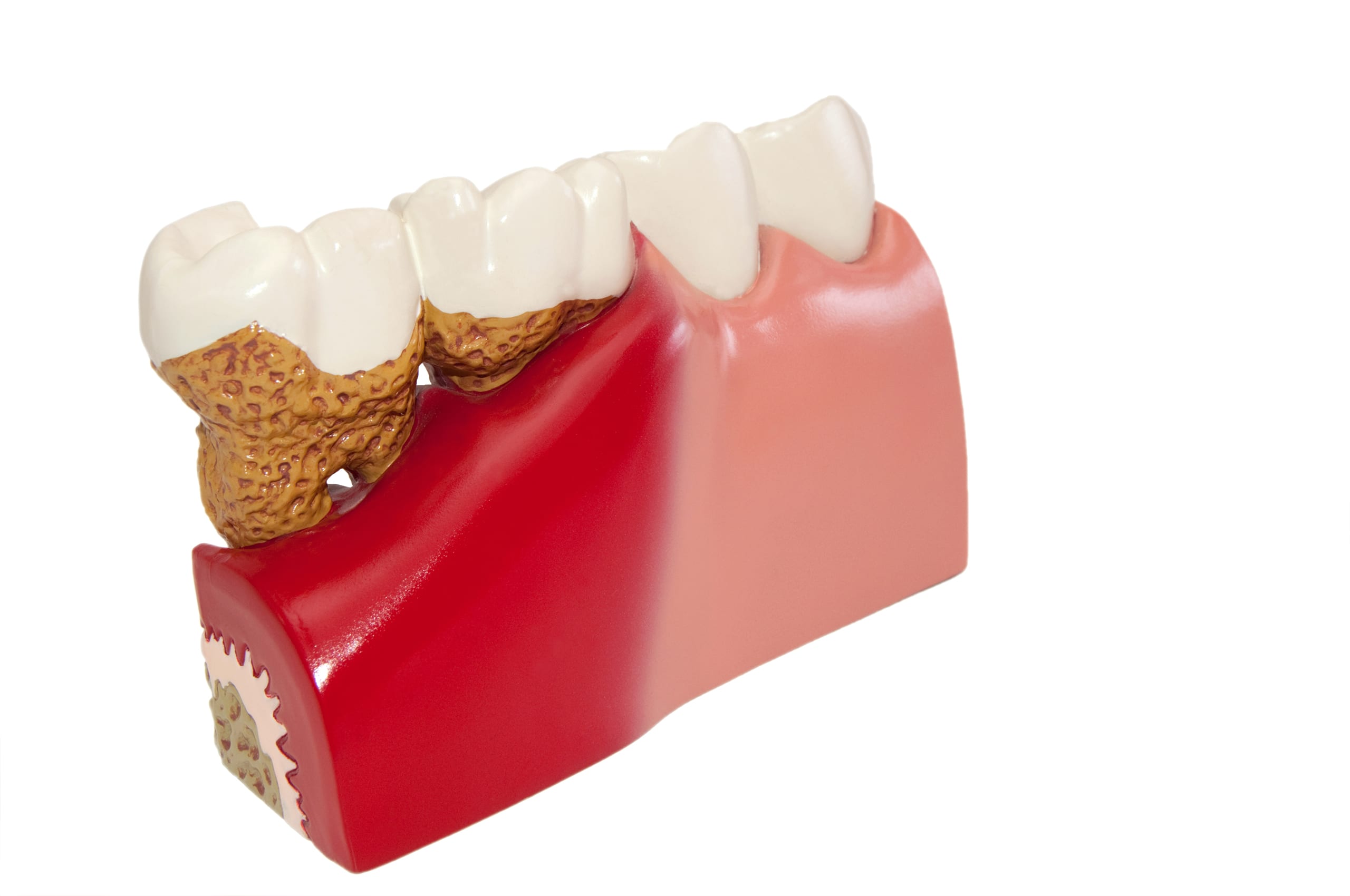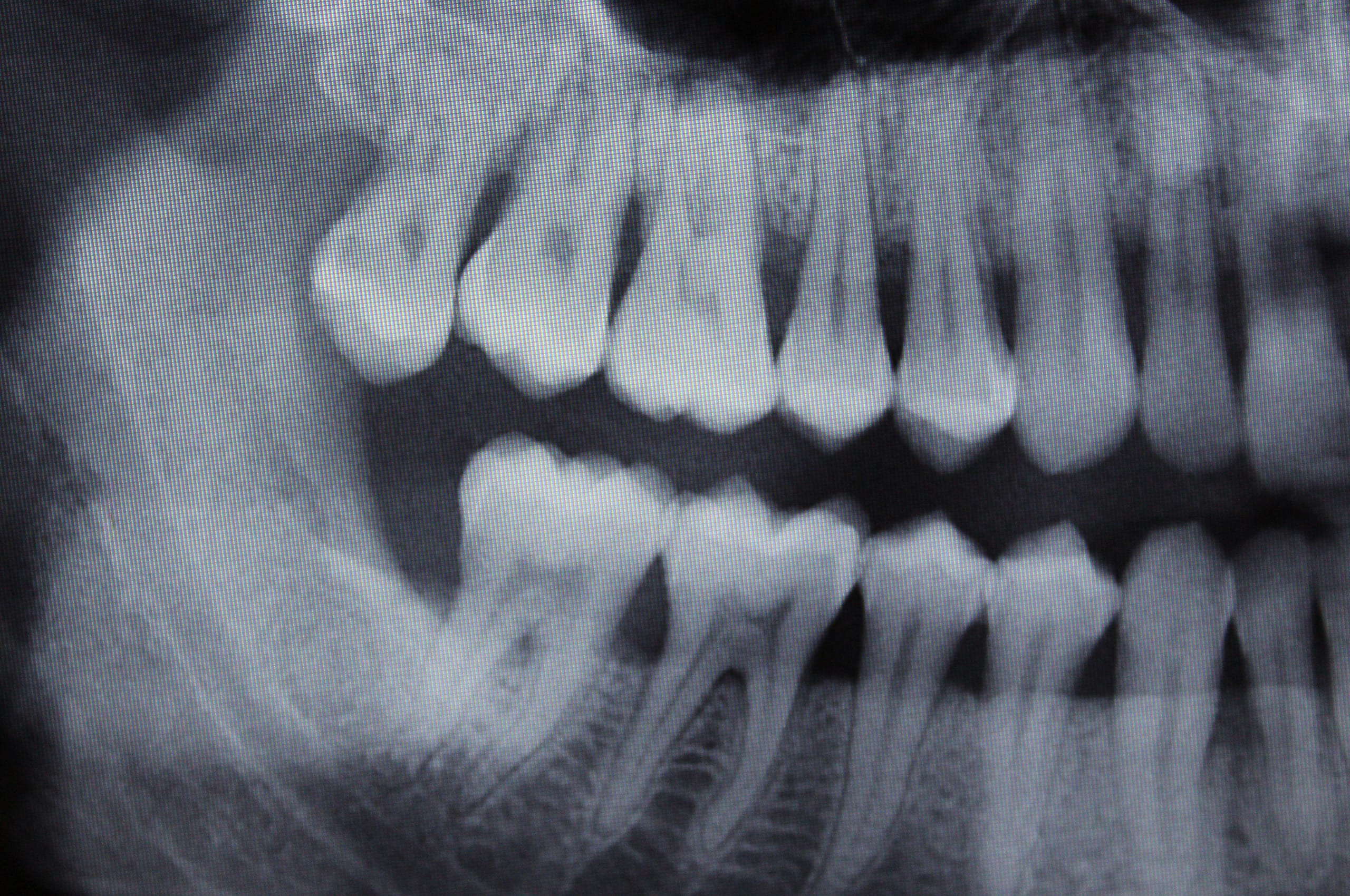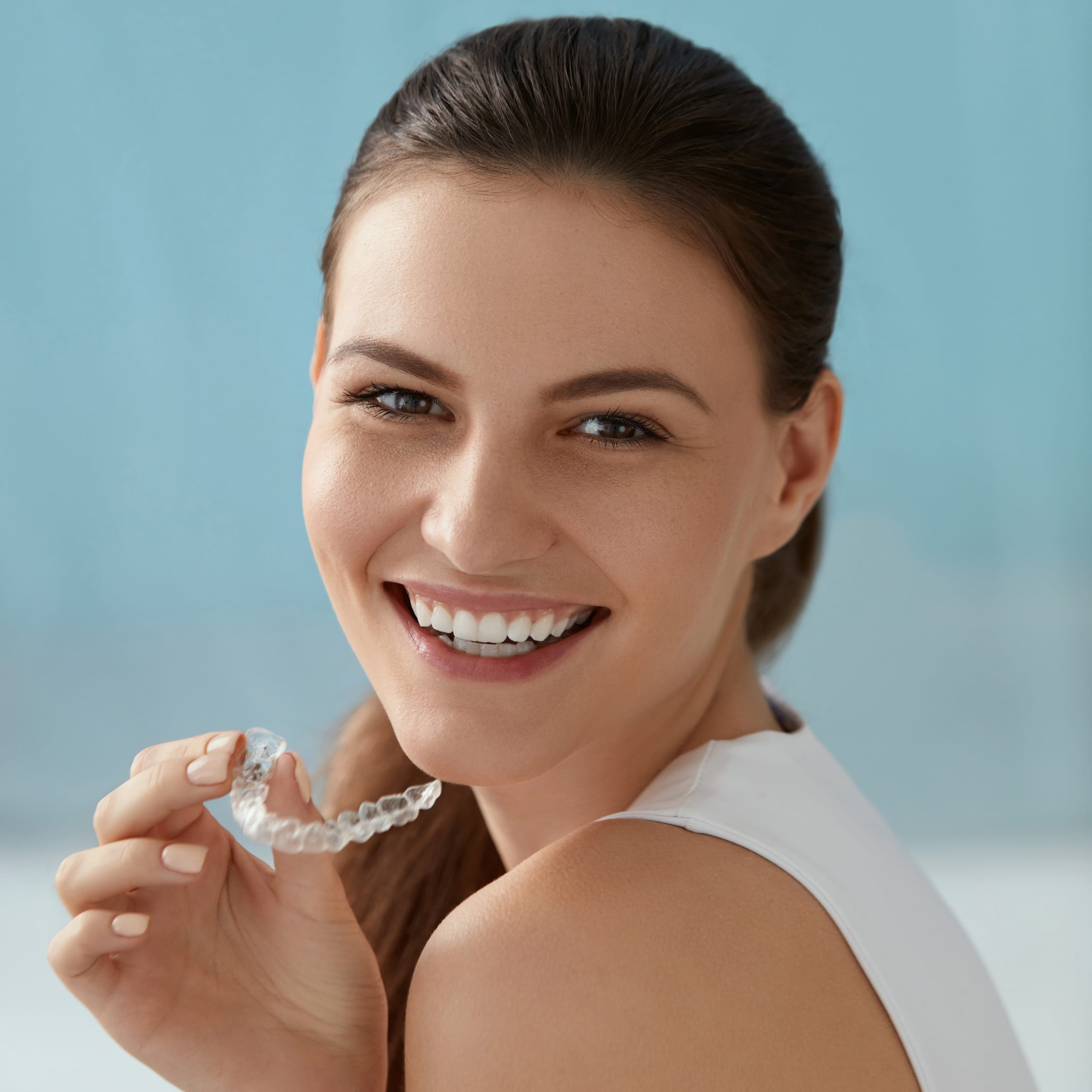Dental
Services
Home »
Children’s Dentistry
We love children in our practice, and we encourage parents to involve children at an early age in active dental care. Feel free to bring toddlers and young children with you to your routine cleanings, so that they can see by watching us take care of you that there is nothing to fear. They also do well watching older brothers and sisters during appointments.
We encourage you to be positive when talking to your children about dental appointments. Avoid using terms that might create anxiety for them, like “shot”, “needle”, “hurt”, and “pain”. Often times anesthesia can be given to children without them even knowing if they have not developed any pre-conceived fears.
Prevention
Our practice emphasizes prevention of dental problems as soon as we see a child. Both adults and children are educated in the importance of regular and proper home care techniques. In addition, children are screened at each cleaning appointment for any developmental or orthodontic needs that may need to be addressed at an early stage.
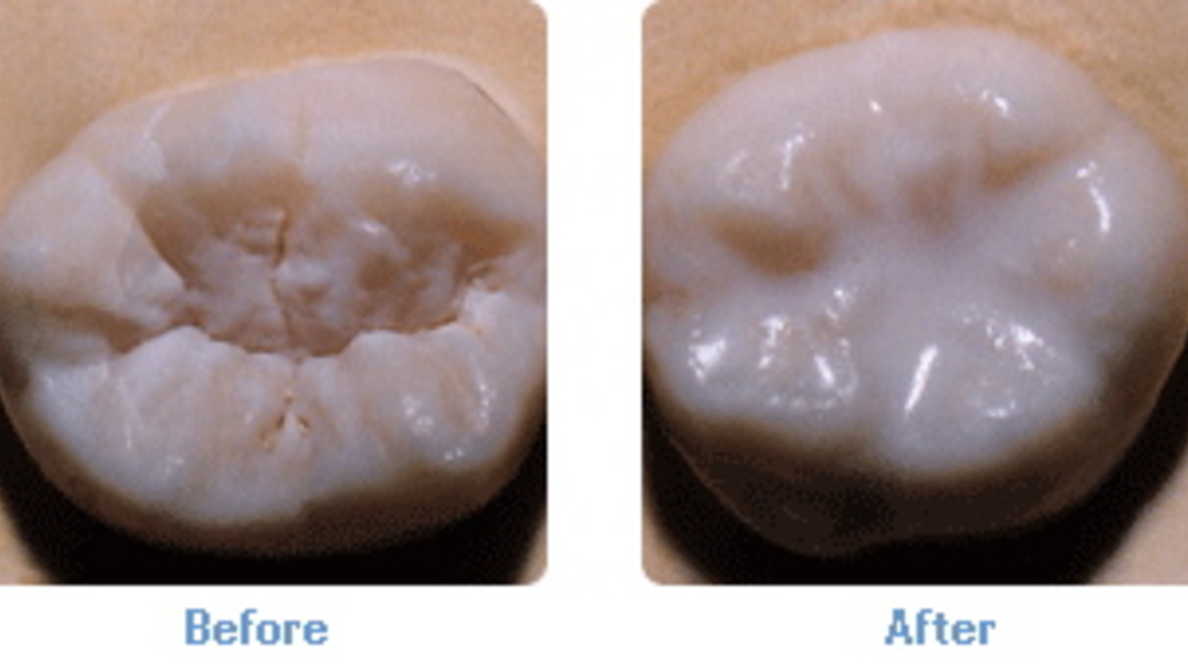
Sealants
Sealants are plastic resin coatings that are placed on the bite surfaces of teeth in children and teenagers to help prevent cavities from forming. Sealants are painlessly placed in the grooves of teeth to keep food and debris from collecting and starting decay. Sealants, when combined with proper brushing and flossing, greatly reduce the chances of cavities in young patients.
Prevention
Cleanings And Exams
The most important appointment you can have at a dental office is for your routine cleaning and check-up. Removal of plaque and tartar from your teeth is vital to prevent decay and gum disease. Plaque and debris left on teeth breaks down into bacteria and over time causes tooth decay. Hard tartar that attaches to tooth surfaces causes gingivitis and gum disease over time.
Our hygienists utilize ultrasonic cleaners, scalers and polishers to safely and thoroughly remove stain and tartar from teeth, and are highly trained to provide treatment as comfortably as possible.
At each recall visit, TMJ and oral cancer screenings are performed, and gum pocket depths are measured. If there is any presence of gum disease, we may recommend more in-depth cleaning of the gum pockets with anesthesia, and more frequent recall visits.
Radiographs
Radiographs, or X-Rays, are taken periodically to help check areas of teeth and bone for problems that cannot be seen visually. Radiographs are vital for detecting cavities between teeth as well as screening for gum disease, cysts, tumors, abscesses or problems with wisdom
teeth.
Bruxism And TMJ Appliances
Bruxism, or “grinding your teeth”, can lead to cracked and fractured teeth, worn dentition, jaw joint pain, clicking or grinding (TMJ disorders), and other oral and health problems. To prevent these issues, custom made soft rubber splints, called “night guards” (since grinding often occurs in your sleep) are fabricated to cushion your bite against ware and stress on the jaw joint. These splints are comfortable and clear, and can be worn day or night.
Treatment of mild TMJ jaw joint disorders is also possible by placing a hard plastic splint that fits over the upper teeth to open the bite into a position that promotes healing of the joint. These devices are case dependent following an evaluation of symptoms and severity.
Cosmetic Dentistry
Your beautiful smile is important to us. If you are unhappy with the shade or appearance of your teeth, we can help you improve your confidence and joy when speaking and smiling.
Tooth Whitening
Most teeth can be significantly lightened in shade with our take-home whitening kits. Impressions are made of your teeth and customized trays are made to specifically fit around the contours of your teeth. Whitening gel is placed in the trays by you at home and the trays are placed over your teeth and worn for a specific time period, and at your convenience. Instructions on the effective and safe usage of the kits will be given to you by our staff.
These kits are more effective and often safer than store bought whitening kits because the trays are customized to fit your teeth more precisely, and the gels are formulated not to be abrasive.

Bonding, Veneers And Crowns
For broken down or badly discolored teeth, tooth-colored fillings (bonding), porcelain veneers, and porcelain crowns can also be placed on teeth to improve shape or shade. Individual use of these restorations depends on the extent of discoloration or breakdown involved.
Fillings
Restoring teeth with fillings is needed when decay or minor chips occur in teeth. We have a variety of materials used to restore teeth depending on the application needed.
For cavities, restorations involve removal of the decayed area and placement of a filling to regain the proper tooth contour. For minor chips on front teeth, tooth colored bonding may be used to restore the proper shape.
Larger cavities may require covering the tooth over with a crown or treating the nerve of the tooth with root canal therapy.
Crowns
Crowns are restorations which cement on top and completely cover the teeth. They may be made of all porcelain, porcelain fused to a metal core, or full gold. They are recommended on teeth in these cases:
LARGE FILLINGS OR CAVITIES: Teeth that have large fillings have thin walls of enamel holding the filling in place that can leak or break off. Large cavities also weaken tooth structure. Covering the tooth with a crown in these cases help strengthen it and prevent unwanted fractures that could lead to losing the tooth.
CRACKED OR BROKEN TEETH: Covering a cracked tooth with a crown helps prevent a fracture that causes loss of tooth structure. Teeth that are already broken need a crown to cover over and restore the shape of the tooth.
ROOT CANAL TREATED TEETH: Teeth that have had root canals may become very brittle and can easily crack or break. Covering the tooth with a crown helps to greatly reduce the chance of breakage.
COSEMETICS: Teeth that are severely discolored or misshaped can be best restored by covering them over with crowns.

Bridges
A bridge is a series of crowns fused together that is cemented as one piece to replace missing teeth. It consists of two or more crowns placed on either side of a missing tooth area with fused teeth in between these crowns to replace the missing teeth. It is a fixed appliance that is not removable, but it requires teeth on either side of the missing space to be fabricated.
Implants
Crowns are also placed on implants, which are artificial tooth roots placed within the bone in an area where a natural tooth has been lost. We work with several oral surgeons and dental labs to plan cases customized to your specific needs.

Dentures & Partials
Although it is always preferable to maintain natural teeth for as long as possible, situations arise where teeth and gums can deteriorate to the point where extraction is the only option. In this event, dentures and partial dentures (often called just “partials”) offer a way to restore your smile and chewing function, and may be a more economical way to replace missing teeth.
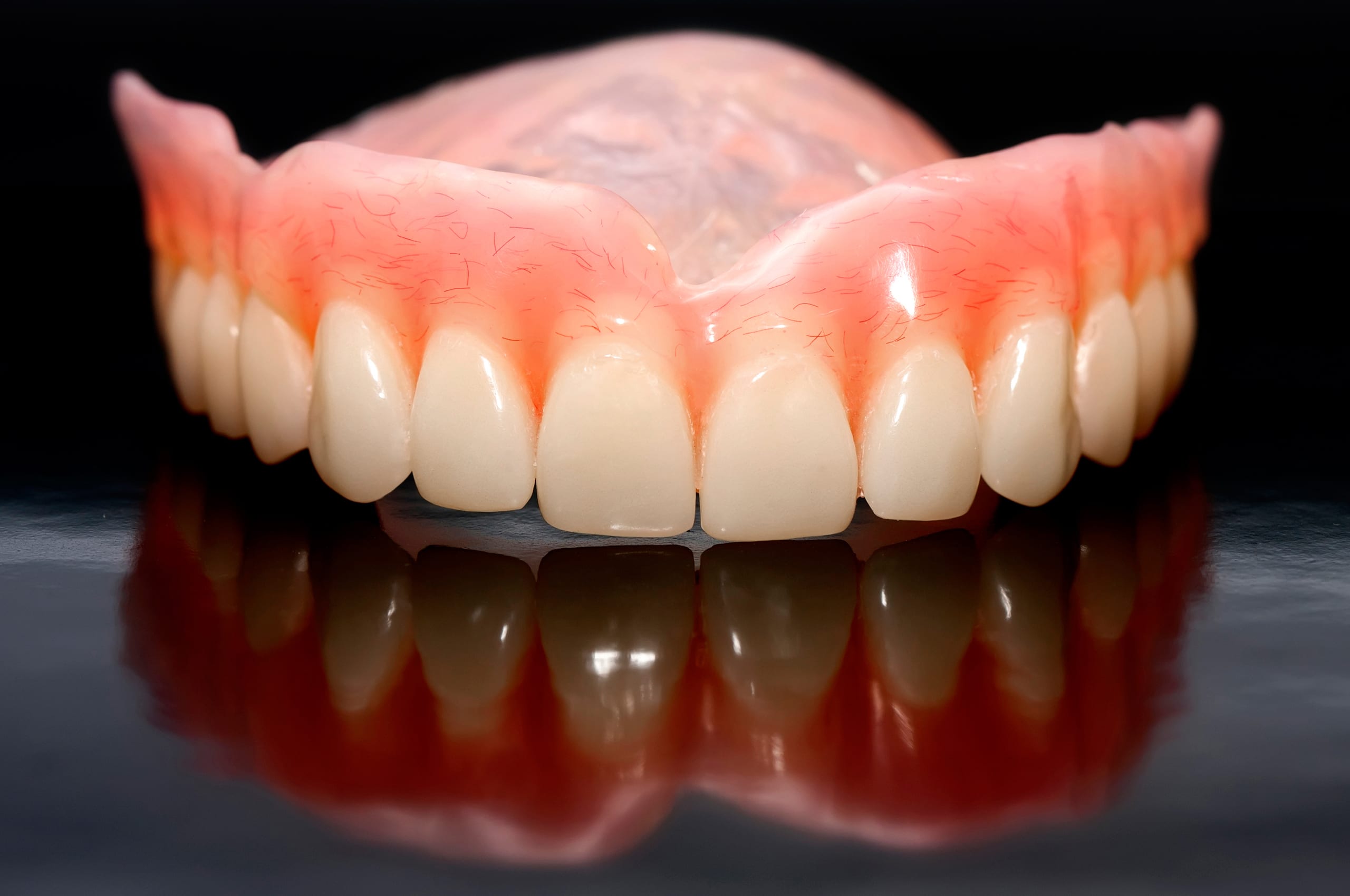
Complete Dentures
Complete dentures are removable restorations designed as a replacement when all teeth in an arch are missing, or need to be extracted. They have plastic teeth fused into a pink acrylic base and rest on the entire surface of the upper and/or lower gums. The retention and stability of a denture depends on numerous factors, including adequate presence of bone, tissue condition, salivary flow and other health considerations.
Partial Dentures
Partial dentures are removable restorations designed to replace missing teeth when some natural teeth remain. These restorations are always preferable to complete dentures due to the added retention obtained when using the natural teeth to help hold the partial in place. Partials can me made of acrylic, acrylic fused to metal, or a flexible plastic. They are held in place by saddle seats and wire, plastic or metal clasps that wrap around existing teeth. The retention and stability of partials depend mostly on the number and the overall health of the remaining teeth that anchor them.
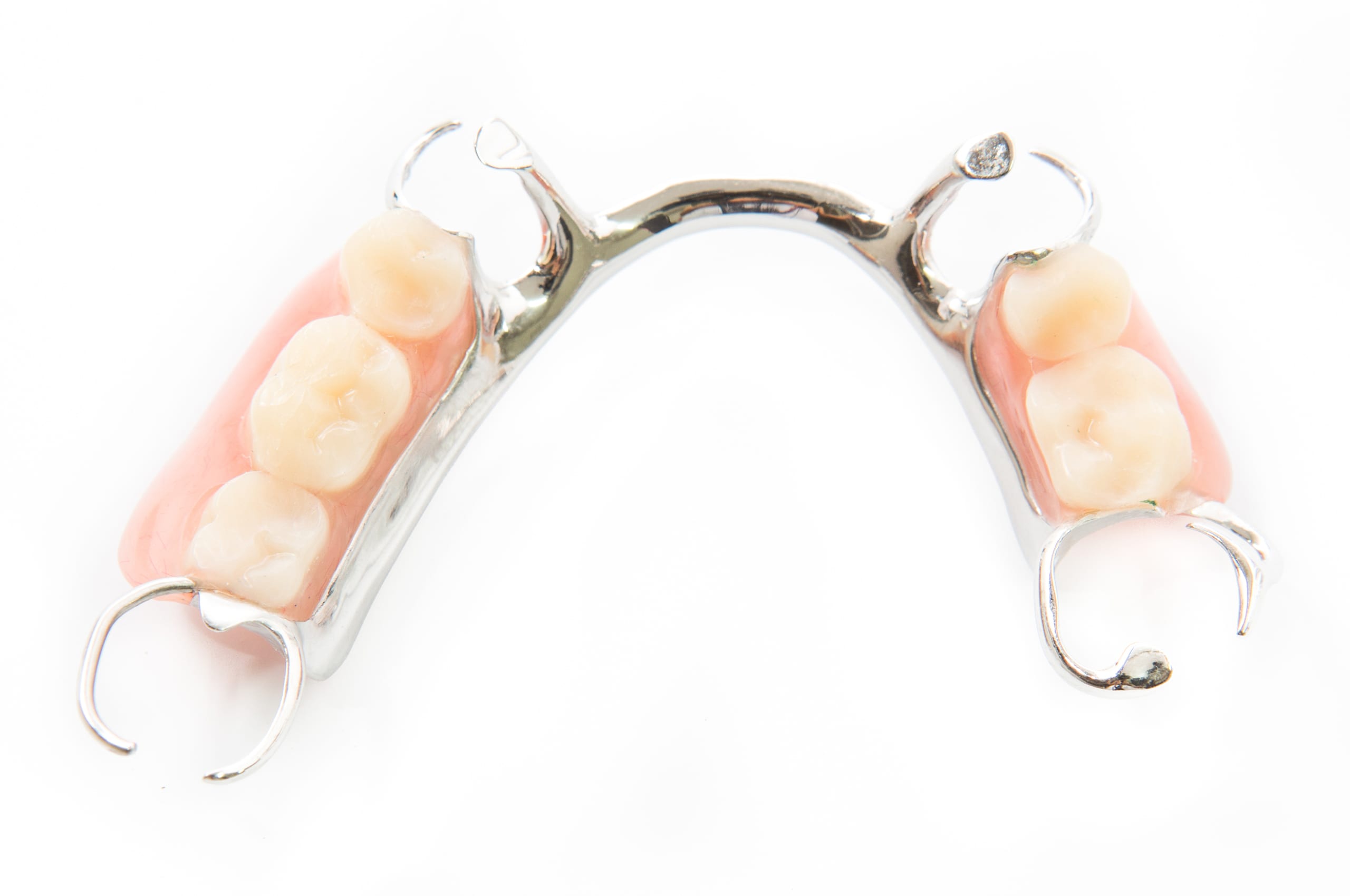
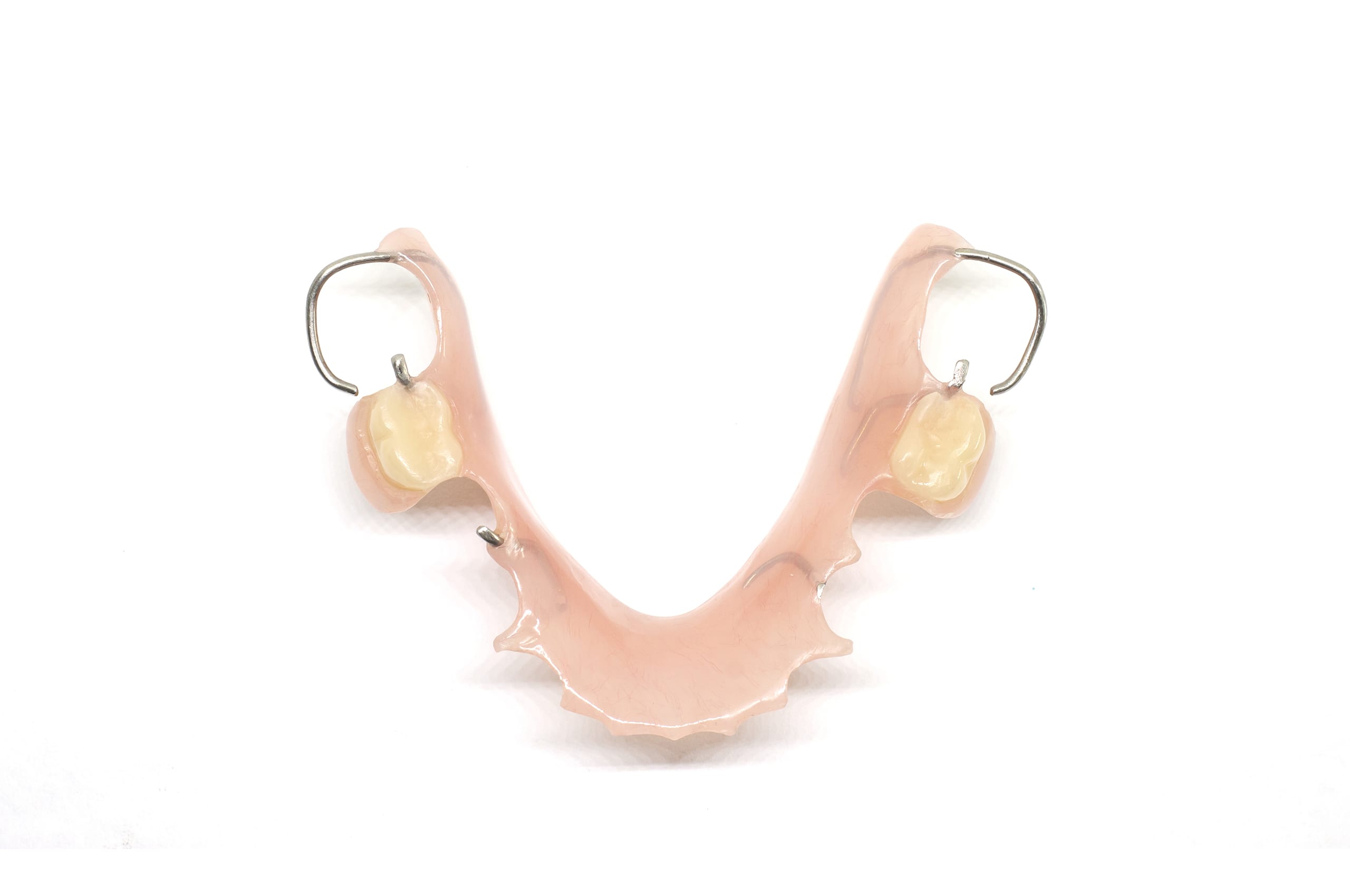
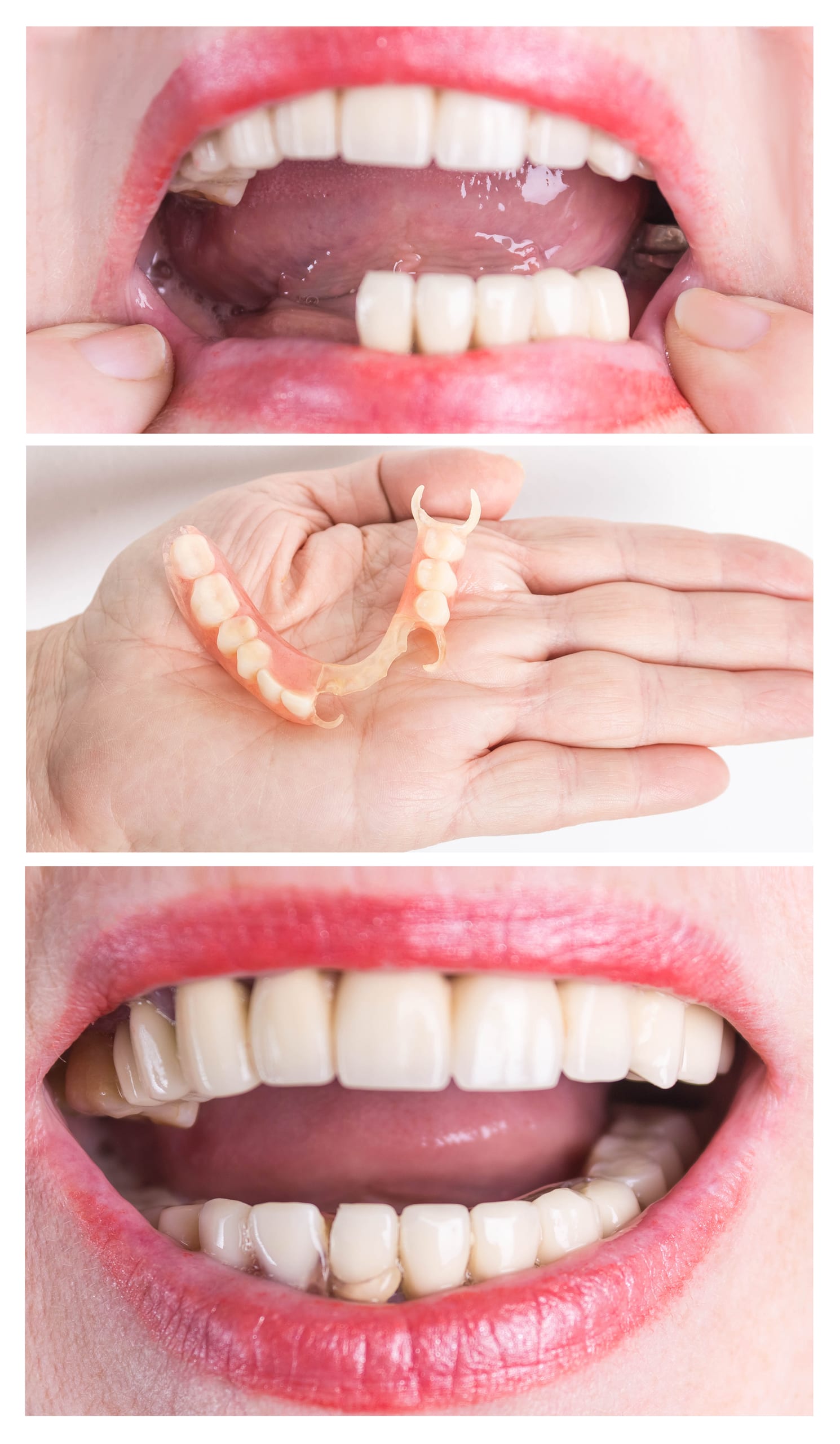
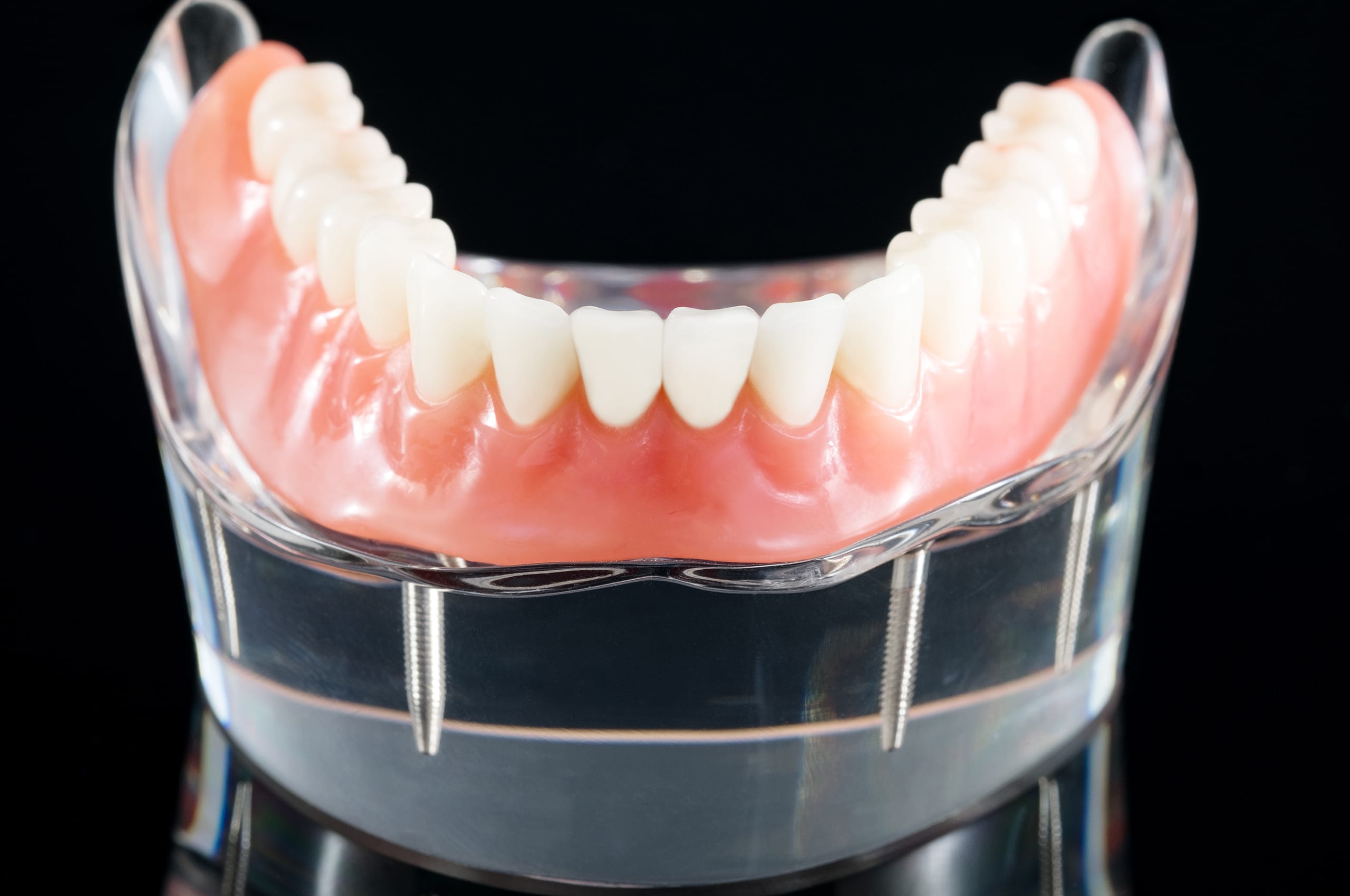
Implants And Dentures
Implants, which are artificial tooth roots placed in the bone at strategic places, can help stabilize dentures even further, especially lower dentures which often require added retention.
Both the implants and the denture bases are fitted with attachments that allow the denture to click on and lock into place on the implant. We work with several oral surgeons and dental labs to plan cases customized to your specific needs.
Relines And Repairs
We are also available to repair and reline your existing dentures to improve fit, appearance or function if possible.
***All of our dentures are custom fitted to your mouth, made of the highest quality materials and produced by experienced craftsmen at highly reputable dental laboratories.
Extractions & Emergencies
If you have an emergency after hours, please call us at (256)-996-1316.
Extractions
Extraction of teeth may be required in the following situations:
- Teeth that are badly decayed, broken or cracked beyond the ability to repair
- Gum disease and bone loss leading to teeth being too unstable or mobile to maintain
- Impacted wisdom teeth which create problems with bone and teeth near them
- Overcrowding may also require extractions in preparation for orthodontic treatment
Most extractions are routine, but some may require minor surgical procedures to be removed.
Oral surgeons may be consulted for the following situations:
- More difficult extractions and removal of wisdom teeth
- Patients taking blood thinners or those with complicated medical histories
- Patients with swelling issues that could lead to medical problems
- Patients with extreme anxiety may benefit from sedation offered by oral surgeons
Post-operative Instructions After Extractions
Aftercare instructions, supplies and any needed medicines will be given after the extraction.
If moderate bleeding is still occurring 10-12 hours after the extraction, please contact us.
Follow these directions at home to allow for proper healing:
- Avoid smoking and drinking through a straw
- Do not swish or gargle for 24 hours
- Avoid chewing in the area of the extraction
- After 24 hours, gently swish warm salt water rinses and clean the area
A dull ache that occurs 2-3 days following an extraction may indicate that a “dry socket” is occurring, meaning the extraction site is not properly healing. Contact us for follow up evaluation and treatment if needed.
What To Do If A Tooth Is Knocked Completely Out From Accident Or Injury
- If possible, try to push the tooth back into the socket and hold pressure on it
- If this cannot be done, place the tooth in a container filled with milk to keep it moist
- Contact our office or emergency number as soon as possible, or go to the nearest hospital ER



